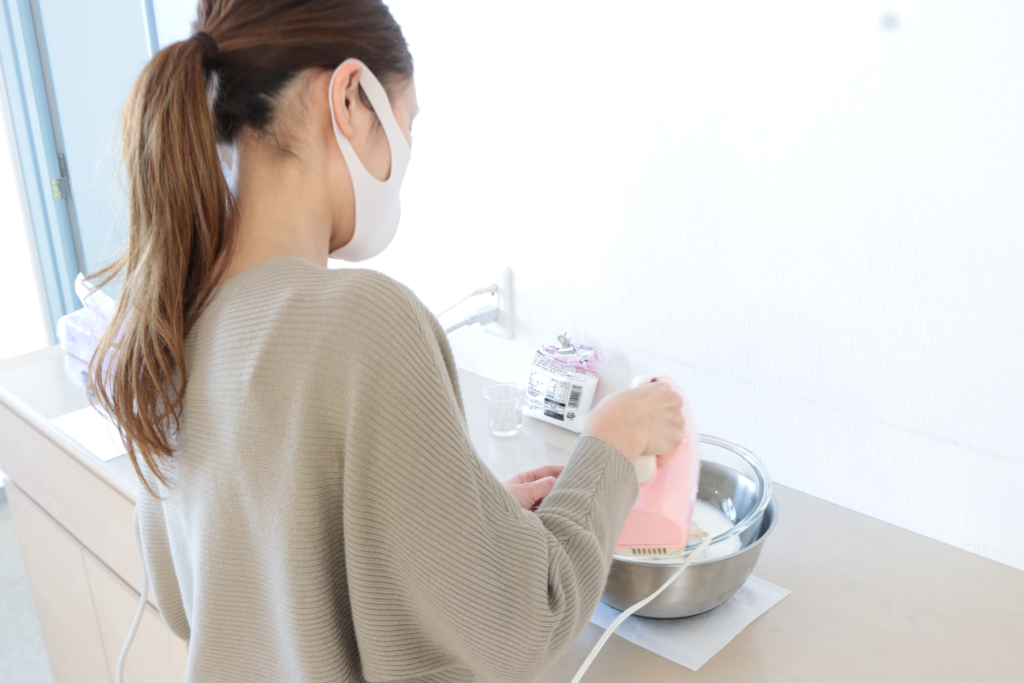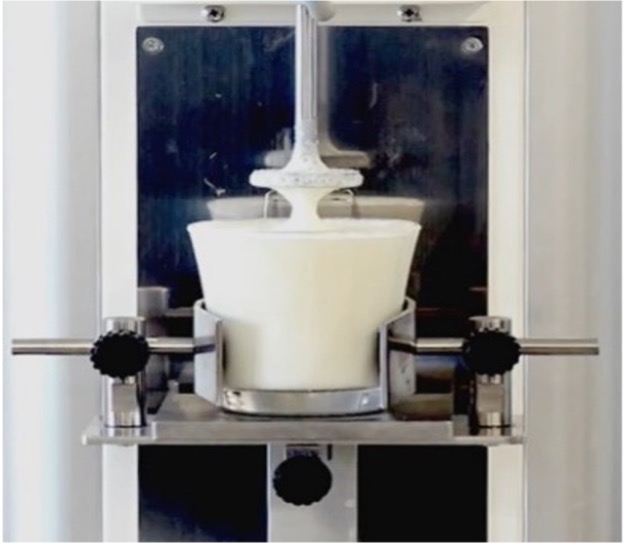
Are you having a fun and delicious home time?
It has been more than a year since the COVID-19Coronacatastrophe began, and it seems that everyone is making the most of their increasing home time enjoyable. While DIY, interior design, and outdoor activities are becoming more and more popular, cooking that makes the whole family happy is also attracting attention. There are many recipes out there, but aren’t there many secrets that you feel like you can only understand with your senses? We try to scientifically elucidate these senses and provide you with tips to make your home time more enjoyable and delicious.
We love cakes!
While some people go into the kitchen, there are many people who try baking cakes that the whole family can work on together and enjoy even while waiting to be baked and putting on the toppings. Even on an ordinary day, a delicious cake is a great way to bring the family together and take away the fatigue of everyday life. The circle of happiness will naturally expand with fruits and colorful toppings that are famous in each season and each region. With all those reasons, we decided unanimously that the first theme to be covered in the laboratory report would be cake without question.
The secret of a delicious cakes
What we have has focused on is whipped cream. Not only shortcakes and cheesecakes, but also chiffon cakes, pound cakes, and many other cakes that use whipped cream. We believe many families start cake making by the short cake with strawberries for their children. Whipped cream is not only used for cakes, but also for pasta and bread. Let us take a look at the secret of whipped cream, an important element of a good cake.

Looks easy but difficult to make whipped cream
• There are many recipes out there, and I am sure everyone has their own way of making delicious, whipped cream. Although whipped cream is widely used, an internal survey showed that it is “surprisingly difficult to make. The reason for this is that “sensory” measures such as “fluffy” and “stiff peaks” are often used. So even if you follow the recipe, if your sense of “fluffiness” or “stiff peaks” is off, the result will be “Huh”? Therefore, we try to scientifically clarify the “stiff peaks” sensation that everyone is looking for in this “whipped cream” so that we can all make delicious “whipped cream” more easily.

Let us experiment!
Now it is time to show what IMADA, force measurement expert, can do. The materials we prepared are as follows.
Preparations
Ingredients
- 200 ml of fresh cream
- 20g granulated sugar
- 20g of granulated sugar, and appropriate amount of ice water
Preparations
If the cream is not well chilled, it tends to separate easily, so we kept it chilled in the refrigerator until just before serving, then added the granulated sugar to a chilled bowl of ice water and beat with an automatic whisker.
Here is the equipment used for the experiment
Measuring Equipment

The equipment used for the experiment was IMADA’s FRTS-5N rheometer (texture analyzer ), which can quantify the texture of foods such as hardness, stickiness, cohesiveness, stickiness, and elasticity. The FRTS-5N is a tabletop rheometer that allows you to quantify the texture of food products such as texture, elasticity, etc.
The rheometer is available for the following foods and other foods as standard. If you are interested in this product, please visit our guide to rheometers and the IMADA website.
【Reference】Information about IMADA’s rheometer FRTS
Examples of foods for standard measurement with IMADA’s rheometer FRTS
(List of food categories (This is a partial list. Please select a similar shape or food)

6)Time to measure! But first, let us lay out the experiment plan
Once we have all the ingredients and measuring equipment, we are ready to embark on a journey of discovery of delicious, whipped cream! Wait! We must say that the world of cakes is not that easy (right?). Time to chill in ice water before beating? The temperature after chilling in ice water and before beating? Time to beat? Should we let it sit after beating?
These are just a few of the tips that can affect how to make delicious, whipped cream. So, we decided to resist the urge to eat it and try to measure various tips on how to make it that might be useful to you. So to speak, this is an “experimental plan”.

This time, we share with you the results of our experiment to find out the relationship between beating time and the stiff peaks of whipped cream. We will be introducing other experiments in the future, so please look forward to them. Let us become a cake master!
The complicated relationship between the fresh cream beating time and the stiff peaks
You may have heard of the degree of beating fresh cream as is slightly soft pea soft peak, slightly stiff peak, stiff peak, and it is frequently used for sweets and cooking. In this article, we measured the force of pushing and pulling of four types of whipped cream, from soft peak to stiff peak, respectively, to find out what kind of material properties they have. The following external link is used as a guide for beating.
【Reference】Kurashiru
https://www.kurashiru.com/recipes/3d184179-e045-4b82-adec-5ef2d7902ac8
【Reference】Magic Kitchen
https://magicalkitchen.com/tips-sw/tips-whippedcream/
- <Slightly Soft Peak>Fresh cream flows down
- <Soft Peak>When you scoop it with a whisker, a trace of the fallen cream remains for a little while as if it can draw lines
- <Slightly Stiff Peak>A state in which the cream does not fall off immediately when scooped with a whisker, but falls in a puddle and forms a stiff
- <Stiff Peak>A state in which the cream has a straight and stiff edge and does not drip
【Reference】Reference: Magical Kitchen, “Whipping cream and beating”
Now, what are the results?
In a word, the conclusion was “too much is as bad as too little. We thought that the degree of fluffiness would gradually increase as the time of beating passed, but that hypothesis was flatly rejected. The degree of fluffiness and firmness increases up to a certain point in time, but after a certain point, the cream stiffens all at once and becomes heavy and sturdy. However, after a certain period of time, the load (gravity) becomes too great and the weight of the cream crushes the peak before it is formed, and as a result, the peak cannot be seen.
Other conditions such as cooling time and temperature also have an effect, but when it comes to the beating time, “too much is as bad as too little”, and if you beat the cream for more than a certain amount of time, the peak will be defeated by the gravity of the earth and will not grow. If you watch carefully, delicious-looking peak will appear, and if you overlook it, the peak will be hidden. It is a profound world of whipped cream.

A little scientific explanation
Let us try to explain the conclusion in a bit of a scientific way. If you think it is too difficult, please skip it.
Experimental method
Four samples of whipped cream are prepared in a bowl and transferred to an experimental cup, and then slowly raise the cup until the jig on the tip of the rheometer comes into contact with the cream surface. After reaching the liquid surface, the jig is pushed down to a depth of 25 mm from the bottom of the cup at a speed of 5 mm/min, and then pulled up at a speed of 10 mm/min until the jig is completely lifted off the liquid surface. By measuring the force of pushing down from the liquid surface and the force of pulling up, the relationship between the degree of firmness of the cream and the formation of the peak is analyzed.
With IMADA’s force measurement equipment, the series of measurements can be fully automated by pre-setting, so there are no individual differences. Since the same result can be obtained no matter who runs the measurement, the automatic measurement function is useful for many customers ranging from cake shops, confectionery shops, restaurants, hotels to food manufacturers.

Scenes from the experiment
See the following pictures for the
- Slightly soft peak (Experiment 1)
- Soft peak (Experiment 2)
- Slightly stiff peak(Experiment 3)
- Stiff peak (Experiment 4) experiments.
Slightly soft peak :Experiment 1
Beating time 4 minutes. The whipped cream flows down



【Reference】Click below for the video for Slightly Soft Peak
Soft peak : Experiment 2
Beating time 5 minutes. When you scoop it with a whisker, the fallen traces remain for a little while as if it can draw lines



【Reference】Click below for the video for Soft Peak
Slightly Stiff peak : Experiment 3
| Beating time 6 minutes. If you scoop with a whisker, the cream will not fall off immediately, but will fall into a lumpy, still peak-like state |



【Reference】Click below for the video for Slightly Stiff Peak
Stiff peak : Experiment 4



【Reference】Click below for the video for Stiff Peak
Results
• ―Blue: Slightly soft peak
• ―Green:Soft peak
• ―Red:Slightly stiff peak
• ―Black:Stiff peak
Slightly soft peak (blue line), Soft peak (green line), Slightly stiff peak (red line), and Stiff peak 9 (black line).The following graphs show the changes in the force to push down (from 0.0 seconds to 6.5 seconds on the horizontal axis) and the force to pull up (from 6.5 seconds to 13.0 seconds on the horizontal axis).

Pushing down force (0.0 to 6.5 seconds: the time elapsed until the force gauge reaches the bottom of the cup from the liquid surface)
• The force of pushing down gradually decreased from 2.0 seconds in the slightly soft peak setting and decreased after a certain period of time (about 3 seconds) in the stiff peak setting but continued to increase until 6.5 seconds in the slightly stiff peak setting.
• This indicates that the whisker can be inserted easily until the stiff peak, but not until slightly stiff peak.
Pulling force (6.5 to 13.0 seconds: the time it takes for the force measurement equipment to reach the top of the liquid from the bottom of the cup)
• When pulling up, a certain amount of force is needed to reach the liquid surface first, but when pulling up to the top of the liquid surface, the cream spills out, so a weak force can be used to pull up. The magic that is created by the cream spilling out when it is pulled up from the liquid surface to the top of the liquid surface is the stiff peak. As the force of about 0.1 Newton gradually decreases to zero from about 9.0 seconds in the stiff peak, the cream that clings to the measuring device gradually falls into the cup and forms the stiff peak. On the other hand, in the slightly stiff peak setting, the slope angle of the graph is tight from 9.0 seconds, and the force of 0.2 Newton returns to zero at once. This confirms that the cream is too thick and falls off before the stiff peak is fully formed.
• In other words, when the cream is stiff peak setting, it is balanced by gravity and forms a delicious peak, but when the cream is slightly stiff peak setting, it collapses like an avalanche before it can form a peak. The secret to fluffy whipped cream seems to be “Too much is as bad as too little.
• By comparing the force required to push down and up, and the time it takes to return to zero, we can determine the amount of time required to beat the cream in order to get the optimal amount of peak. In this experiment, we were able to confirm that a stiff peak (seven minutes beating) scientifically creates a condition that facilitates the formation of the peak, and we were also able to confirm that if the mixing time is increased even slightly, the peak will fall apart before it is formed.
Sneak preview for the next issue and beyond
- Well, what did you all think? I think you can see the importance of time and the fact that it is not reversible. We will continue to work on various experiments in the “Laboratory Report”, and of course, we will introduce our exploration of the stiff peak of whipped cream sometime in the future, so please look forward to the next issue and beyond!
- We also invite readers to share their “secrets of this and that taste! We are also looking for readers to share with us their “culinary sensations” that they would like us to explore.
- The IMADA staff will be conducting tasty and fun experiments, and we will be sharing the results and hints with you.
- This month’s superstition (?) “Your cake will taste better if you make friends with gravity!







